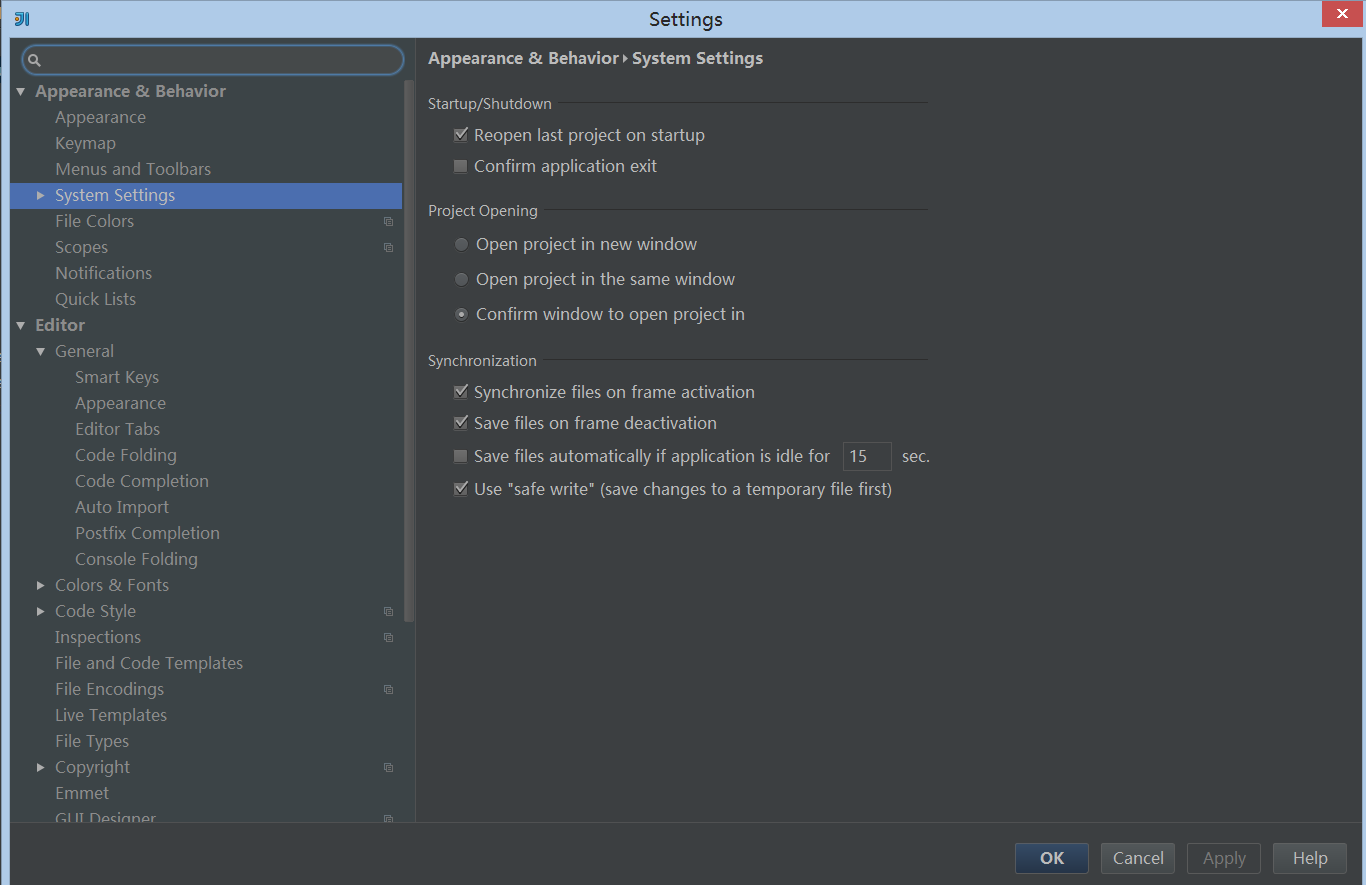Intellij IDEA 默认打开上次项目设置
本文共 260 字,大约阅读时间需要 1 分钟。
场景
默认情况下,每次打开Intellij IDEA,都会连带着打开上次打开的项目。如果不希望它每次打开时都连带的打开上次的项目,可通过“系统设置”进行配置。
配置方法
如下图所示,找到Intellij配置中的System Settings,右边的Reopen last project on startup,默认为勾选状态,即每次打开IDE时,会打开上次的项目。将此勾选去掉即可。同时,在Project Opening中还可以进一步配置打开新项目时是否新开一个窗口,是否在当前窗口,是否通过提示的方式让操作者进行选择。

你可能感兴趣的文章
Nginx 反向代理解决跨域问题
查看>>
Nginx 反向代理配置去除前缀
查看>>
nginx 后端获取真实ip
查看>>
Nginx 多端口配置和访问异常问题的排查与优化
查看>>
Nginx 如何代理转发传递真实 ip 地址?
查看>>
Nginx 学习总结(16)—— 动静分离、压缩、缓存、黑白名单、性能等内容温习
查看>>
Nginx 学习总结(17)—— 8 个免费开源 Nginx 管理系统,轻松管理 Nginx 站点配置
查看>>
Nginx 学习(一):Nginx 下载和启动
查看>>
nginx 常用指令配置总结
查看>>
Nginx 常用配置清单
查看>>
nginx 常用配置记录
查看>>
nginx 开启ssl模块 [emerg] the “ssl“ parameter requires ngx_http_ssl_module in /usr/local/nginx
查看>>
Nginx 我们必须知道的那些事
查看>>
Nginx 源码完全注释(11)ngx_spinlock
查看>>
Nginx 的 proxy_pass 使用简介
查看>>
Nginx 的 SSL 模块安装
查看>>
Nginx 的优化思路,并解析网站防盗链
查看>>
Nginx 的配置文件中的 keepalive 介绍
查看>>
Nginx 相关介绍(Nginx是什么?能干嘛?)
查看>>
Nginx 知识点一网打尽:动静分离、压缩、缓存、跨域、高可用、性能优化...
查看>>